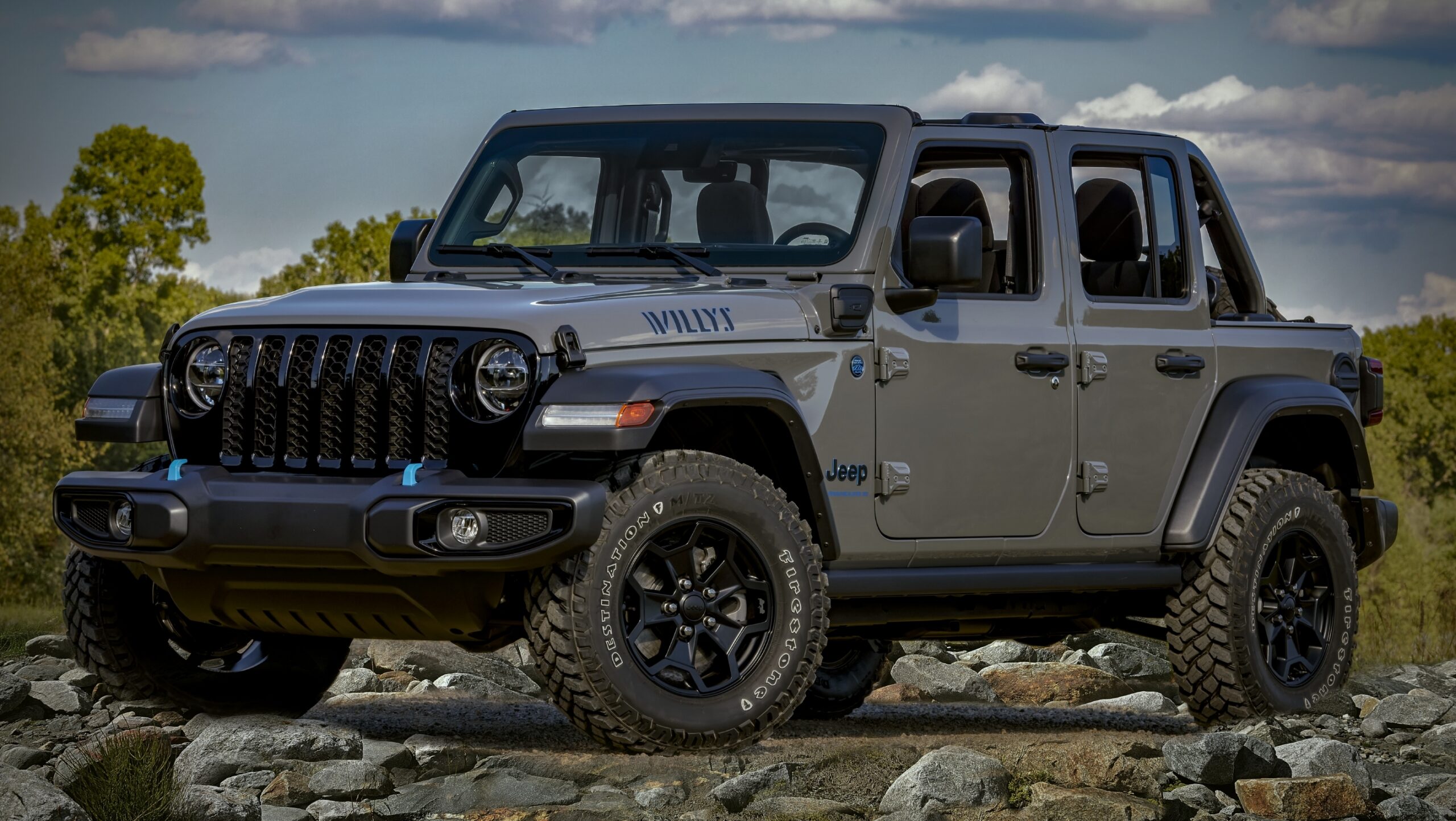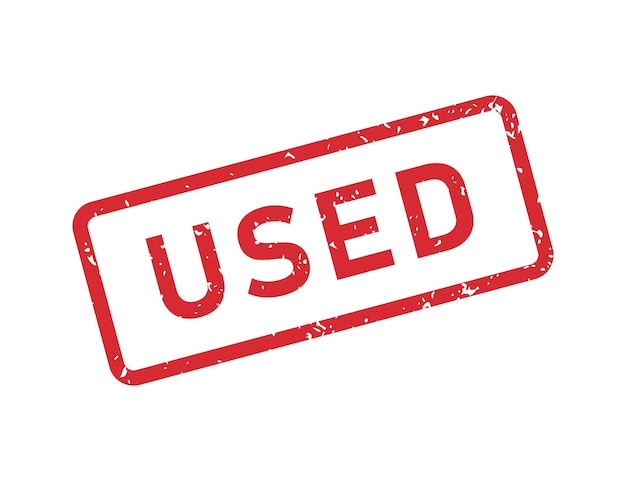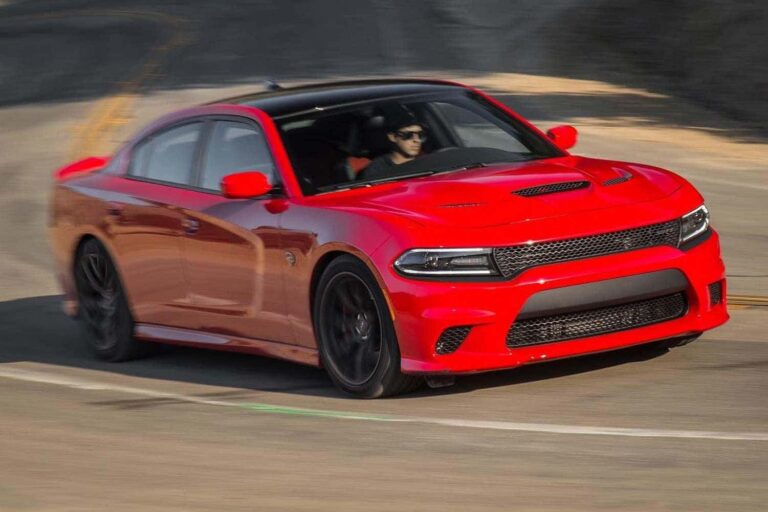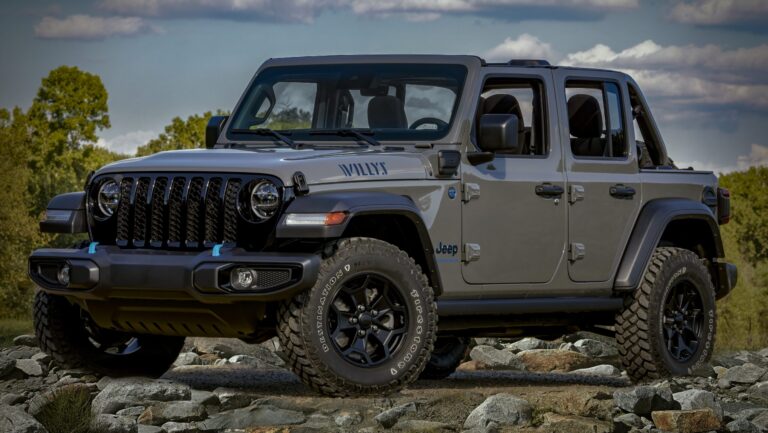Jeep 4.0 For Sale: Your Ultimate Guide to Finding the Legendary Inline-Six
Jeep 4.0 For Sale: Your Ultimate Guide to Finding the Legendary Inline-Six jeeps.truckstrend.com
In the vast landscape of automotive history, few engines have achieved the legendary status and cult following of the Jeep 4.0-liter inline-six. Renowned for its unparalleled durability, simplicity, and surprising torque, this powerplant became the heart of some of Jeep’s most iconic vehicles, including the Cherokee XJ, Wrangler YJ and TJ, and Grand Cherokee ZJ. For enthusiasts, off-roaders, and those seeking a reliable, character-filled vehicle, the phrase "Jeep 4.0 For Sale" isn’t just a classified ad; it’s an invitation to own a piece of automotive history, a testament to robust engineering that simply refuses to quit.
This comprehensive guide is designed to equip you with all the knowledge needed to navigate the market for a Jeep 4.0. We’ll explore why this engine remains so sought after, which models house it, what to meticulously inspect before buying, and how to ensure your ownership experience is as rewarding as the engine itself.
Jeep 4.0 For Sale: Your Ultimate Guide to Finding the Legendary Inline-Six
The Legend Under the Hood: Why the Jeep 4.0L Endures
The AMC 4.0L (later Chrysler 4.0L) inline-six engine, produced from 1987 to 2006, is arguably one of the most beloved and successful engines ever put into a mass-produced vehicle. Its design is deceptively simple: a cast-iron block and cylinder head, overhead valves (OHV) operated by pushrods, and multi-port fuel injection. But within this simplicity lies its genius.
- Unrivaled Durability: The 4.0L is famous for its ability to rack up hundreds of thousands of miles, often exceeding 300,000 or even 400,000, with proper maintenance. Its robust construction and under-stressed design contribute to its longevity.
- Torque Monster: With a long stroke and large displacement, the 4.0L produces ample low-end torque, making it ideal for off-roading, towing, and navigating challenging terrain without constantly revving high. This characteristic is a major reason for its popularity among the off-road community.
- Simplicity and Serviceability: Unlike many modern, complex engines, the 4.0L is relatively easy to work on. Its straightforward design means that many common repairs can be tackled by a home mechanic, reducing ownership costs and fostering a strong DIY community.
- Reliable Performance: While not a horsepower king, the 4.0L delivers consistent, predictable power. It’s known for starting reliably in various conditions and performing dependably day in and day out.

For these reasons, the "Jeep 4.0 For Sale" listing represents not just a vehicle, but a promise of enduring utility and a connection to a rich legacy of adventure.
Which Jeep Models Feature the 4.0L Engine?
When you search for "Jeep 4.0 For Sale," you’ll primarily encounter four distinct models, each offering a unique ownership experience:
1. Jeep Cherokee XJ (1987-2001)
- The Ubiquitous Workhorse: The XJ Cherokee is arguably the most common and iconic vehicle to house the 4.0L engine. Its unibody construction, compact dimensions, and excellent off-road capability made it a bestseller and a favorite among enthusiasts.
- Pros: Lightweight, highly capable off-road, vast aftermarket support, affordable, easy to maintain.
- Cons: Prone to rust (especially rocker panels, floorboards, and rear spring mounts), unibody can flex under extreme off-road conditions (though stiffeners are available).
- Why Buy: If you want a versatile, no-nonsense SUV that can serve as a daily driver and a weekend trail rig, the XJ is a prime candidate.

![]()
2. Jeep Wrangler YJ (1991-1995)
- The Square-Headlight Trail Blazer: The YJ was the first Wrangler to receive the 4.0L engine, replacing the old 4.2L carbureted inline-six. It retains the classic open-air Jeep experience but with more reliable power.
- Pros: Classic Wrangler styling, removable top and doors, solid axles, good off-road performance.
- Cons: Leaf spring suspension (harsher ride than TJ), square headlights are a love-it-or-hate-it feature for some, rust can be an issue on the frame.
- Why Buy: For those seeking a more traditional, rugged Wrangler experience with the proven 4.0L power.
3. Jeep Wrangler TJ (1997-2006)
- The Modern Classic: The TJ Wrangler brought back round headlights and introduced coil spring suspension, significantly improving ride quality and articulation compared to the YJ, while retaining the solid axles and open-air fun. The 4.0L was standard.
- Pros: Excellent off-road capability, improved ride comfort, massive aftermarket support, iconic looks.
- Cons: Can be pricey, especially later models or Rubicon trims, less practical for daily driving than an XJ, prone to frame rust.
- Why Buy: If you want the quintessential, most refined classic Wrangler experience with the 4.0L.
4. Jeep Grand Cherokee ZJ (1993-1998)
- The Comfortable Cruiser: The ZJ offered the 4.0L as its base engine, providing a more comfortable and spacious alternative to the XJ, with more luxurious features and a quieter ride.
- Pros: More refined interior, better ride quality, comfortable for long trips, still capable off-road.
- Cons: More complex electronics, heavier than the XJ, can suffer from blend door issues (HVAC), rust can be a factor.
- Why Buy: For those who appreciate the 4.0L’s reliability but desire more creature comforts and space.
While the Comanche MJ pickup also utilized the 4.0L, it’s far less common in the "Jeep 4.0 For Sale" market today.
Navigating the Market: What to Look For When Buying a Jeep 4.0
Finding the right "Jeep 4.0 For Sale" requires a keen eye and a systematic approach. Remember, these vehicles are often 20+ years old, and their condition will vary wildly.
1. The Engine Itself (The 4.0L Heartbeat)
- Oil Leaks: Common areas include the valve cover gasket, oil filter adapter, and the rear main seal. While a weeping rear main seal is almost a rite of passage, excessive dripping indicates a needed repair.
- Cooling System: The 4.0L runs hot. Check the radiator (look for green or orange crusting), hoses (cracks, bulges), water pump (leaks from weep hole), and thermostat housing. A clogged radiator or failing fan clutch can lead to overheating.
- "Ticking" Noise: A common complaint, often due to cracked exhaust manifolds (which can be replaced with aftermarket headers) or worn lifters. A light tick is often tolerable, but a loud knock indicates serious issues.
- Rough Idle/Misfires: Could be anything from a vacuum leak, bad O2 sensor, dirty throttle body, or worn spark plugs/wires.
- Oil Color/Level: Dark but clear oil is okay; milky or frothy oil indicates coolant contamination. Sludge under the oil cap suggests poor maintenance.
2. Transmission and Drivetrain
- Automatic (AW4 for XJ/TJ/ZJ): Check fluid color (should be red, not brown or black), smell (shouldn’t smell burnt), and shifting. It should shift smoothly without harsh clunks or slipping.
- Manual (AX-15/NV3550 for YJ/TJ): Check clutch feel, smooth engagement, and absence of grinding when shifting.
- Transfer Case (NP231/NP242): Check for fluid leaks, clunking when shifting into 4WD (could indicate a stretched chain), and ensure all 2WD/4WD modes engage properly. Test both high and low range.
- Axles/Differentials: Listen for unusual whining or grinding noises, especially when turning. Check for fluid leaks around the differential covers and pinion seals.
3. Frame and Body Rust
- XJ Specific: Pay close attention to the rocker panels, floorboards, front subframe rails, and rear leaf spring mounts. These are notorious rust spots due to the unibody design.
- YJ/TJ Specific: The frame is key. Check the areas around the skid plates, body mounts, spring perches, and especially the rear section near the gas tank. Serious frame rust can be a deal-breaker.
- General: Inspect door sills, wheel wells, and behind plastic cladding. Surface rust is manageable, but structural rust is a major red flag.
4. Suspension and Steering
- "Death Wobble": A violent shaking of the front end, often triggered by hitting a bump. It’s usually caused by worn steering components (tie rod ends, ball joints, track bar) or poor alignment/tire balance. While fixable, it indicates neglect.
- Shocks/Springs: Look for leaking shocks or sagging springs, especially on lifted vehicles.
- Bushings: Inspect control arm bushings, sway bar bushings, and track bar bushings for cracking or deterioration.
5. Electrical and Interior
- Windows/Locks: Power windows are a common failure point in XJs. Test all electrical accessories.
- HVAC: Ensure the heater and AC work, and that the fan speeds function correctly.
- Gauges: Check if all gauges (oil pressure, temp, voltage, fuel) are working and providing plausible readings.
6. Modifications
- Assess Quality: Many Jeeps are modified. Inspect the quality of lift kits, aftermarket bumpers, and wiring. Poorly installed modifications can lead to more problems than they solve.
- Purpose: Understand if the modifications suit your intended use. A heavily modified rock crawler might not be ideal for daily driving.
7. Documentation and History
- Service Records: Ask for any maintenance history. A well-documented vehicle suggests a caring owner.
- Accident History: Get a vehicle history report (CarFax, AutoCheck) to check for accidents, salvage titles, or flood damage.
Practical Advice: Always, always, always get a pre-purchase inspection by a trusted mechanic familiar with Jeeps. It’s a small investment that can save you thousands down the line. Take it for a thorough test drive, including highway speeds and some low-speed maneuvering.
The Value Proposition: Pricing and Budgeting for a Jeep 4.0
The price of a "Jeep 4.0 For Sale" can vary wildly based on model, year, condition, mileage, modifications, and geographic location. Expect to pay anywhere from a few thousand dollars for a rough project to $15,000+ for a meticulously maintained or professionally built example.
Factors Influencing Price:
- Condition: Rust-free bodies, strong engines, and well-maintained drivetrains command higher prices.
- Mileage: While the 4.0L is durable, lower mileage typically means a higher asking price. However, a high-mileage vehicle with excellent maintenance records can be a better buy than a lower-mileage neglected one.
- Modifications: Quality modifications (e.g., reputable lift kits, armor, winches) can add value, but poorly done or extreme modifications might not appeal to everyone.
- Model/Trim: TJ Wranglers, especially Rubicons, generally command the highest prices. XJs are typically the most affordable entry point.
Estimated Price Ranges (Examples – Highly Variable):
| Model | Year Range | Condition: Project/Rough | Condition: Average/Driver | Condition: Excellent/Restored | Key Considerations |
|---|---|---|---|---|---|
| Jeep Cherokee XJ | 1987-2001 | $1,500 – $4,000 | $4,000 – $8,000 | $8,000 – $15,000+ | Rust is primary concern; Unibody strength. |
| Jeep Wrangler YJ | 1991-1995 | $3,000 – $6,000 | $6,000 – $12,000 | $12,000 – $20,000+ | Frame rust, leaf springs; Classic, raw feel. |
| Jeep Wrangler TJ | 1997-2006 | $5,000 – $10,000 | $10,000 – $18,000 | $18,000 – $30,000+ | Frame rust, higher demand; Coil springs for comfort. |
| Jeep Grand Cherokee ZJ | 1993-1998 | $1,000 – $3,500 | $3,500 – $7,000 | $7,000 – $12,000+ | Electrical issues, blend doors; More creature comforts. |
Budgeting Beyond the Purchase Price:
Factor in immediate maintenance (fluid changes, tune-up), potential repairs (e.g., worn suspension components), insurance, registration, and any desired modifications. A buffer of $1,000-$3,000 for initial sorting is a wise idea.
After the Purchase: Owning and Maintaining Your 4.0L Jeep
Congratulations! You’ve found your "Jeep 4.0 For Sale" and brought it home. Now the real adventure begins: ownership and maintenance.
- Routine Maintenance is Key: The 4.0L thrives on regular oil changes (every 3,000-5,000 miles), proper coolant flushes, and regular tune-ups (spark plugs, wires, cap, rotor, fuel filter). Don’t neglect transmission and differential fluid changes.
- Cooling System Vigilance: The Achilles’ heel of the 4.0L is often its cooling system. Proactively replace components like the water pump, thermostat, radiator, and fan clutch every 7-10 years or 100,000 miles, especially if you plan on off-roading or living in a hot climate.
- Address Leaks Promptly: While minor oil seepage is common, address any active leaks to prevent more serious issues down the line and keep your driveway clean.
- Embrace the Community: The Jeep 4.0L community is vast, knowledgeable, and incredibly supportive. Online forums (like Cherokee Forum, JeepForum, NAXJA), Facebook groups, and local clubs are invaluable resources for advice, troubleshooting, and finding parts.
- DIY-Friendly: Many common repairs and upgrades are well-documented and achievable for the home mechanic. Invest in a good service manual (like Haynes or Chilton) and some basic tools.
- Upgrade Wisely: If you plan to modify, research thoroughly. Prioritize functional upgrades that improve reliability and capability before aesthetic ones.
Owning a Jeep with the 4.0L engine is more than just owning a vehicle; it’s joining a legacy. These vehicles are known for their ruggedness, their ability to take you almost anywhere, and their enduring charm.
Frequently Asked Questions (FAQ) about Jeep 4.0 For Sale
Q: Is the Jeep 4.0L engine truly as reliable as people say?
A: Yes, generally. With proper and consistent maintenance, the 4.0L is one of the most reliable and durable engines ever made, capable of hundreds of thousands of miles. Its simplicity contributes to its longevity.
Q: What are the most common issues with the 4.0L engine?
A: Common issues include oil leaks (especially from the rear main seal and valve cover), cooling system problems (overheating, failing radiators/water pumps), and cracked exhaust manifolds leading to a ticking sound. These are generally well-documented and fixable.
Q: Which Jeep model with the 4.0L is best for off-roading?
A: The Wrangler TJ and Cherokee XJ are generally considered the top choices for off-roading due to their robust solid axles, ample aftermarket support, and relatively lightweight designs. The TJ often gets the edge for articulation out of the box due to its coil spring suspension.
Q: What should I look for when buying a high-mileage 4.0L Jeep?
A: Focus on maintenance records. A high-mileage Jeep with documented regular oil changes, cooling system overhauls, and general care is often a better buy than a lower-mileage one that’s been neglected. Inspect for rust, especially on the frame and unibody.
Q: Can I daily drive a 4.0L Jeep?
A: Absolutely. Many owners daily drive their 4.0L Jeeps. The XJ Grand Cherokee ZJ offer more comfort for daily commuting, while Wranglers (YJ/TJ) are more raw but still perfectly capable daily drivers for many. Fuel economy will be modest (typically 15-20 MPG).
Q: Are parts readily available for 4.0L Jeeps?
A: Yes, parts availability is excellent. Due to the engine’s long production run and the popularity of the vehicles it powered, both OEM and aftermarket parts are widely available and often affordable.
Q: What is "death wobble" and how do I avoid it?
A: "Death wobble" is a violent, uncontrollable shaking of the front end that can occur in solid-axle Jeeps (like the XJ, YJ, TJ) when hitting a bump at speed. It’s usually caused by worn or loose steering and suspension components (e.g., track bar, tie rod ends, ball joints, control arm bushings). To avoid it, ensure all steering and suspension components are in good condition and have a proper alignment.
Conclusion
The "Jeep 4.0 For Sale" market is a vibrant testament to an engine that defined an era of rugged capability and reliability. Whether you’re seeking a trail-conquering machine, a dependable daily driver, or a project to pour your passion into, the 4.0L-powered Jeeps offer an unmatched blend of character, simplicity, and enduring performance. By understanding its strengths, recognizing potential weaknesses, and approaching the buying process with diligence, you can confidently acquire a vehicle that promises not just transportation, but a legendary adventure waiting to unfold. Embrace the legacy, and enjoy the ride.





